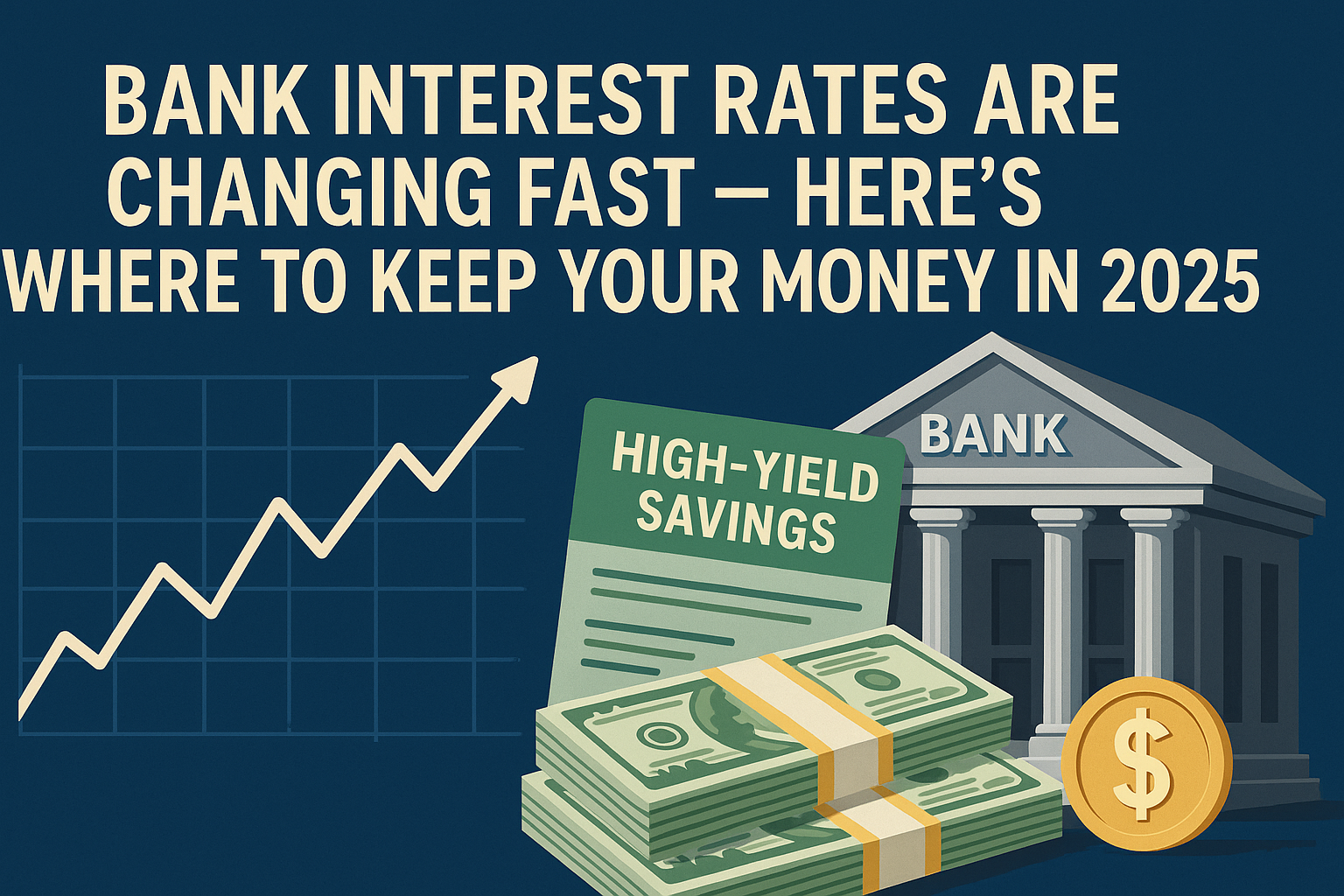
Introduction: A New Era of Savings
2025 has brought dramatic changes in global banking. After several years of rate hikes and inflation shifts, banks are competing harder than ever to attract depositors. For everyday savers, that means new opportunities — but also new risks.
If you’re wondering where your cash should sit to earn the most (without unnecessary risk), here’s a breakdown of the smartest and safest places to park your money in 2025.
1. High-Yield Online Savings Accounts
Traditional banks are struggling to keep up with online competitors. Many digital-only banks now offer interest rates exceeding 5% APY, compared to the 0.1–0.3% offered by brick-and-mortar institutions.
Top-performing platforms like SoFi, Ally, and Discover Bank combine high yields with zero maintenance fees and instant transfers.
Tip: Always confirm FDIC insurance coverage before depositing. Your funds should be protected up to $250,000 per account.
2. Certificates of Deposit (CDs) with Flexible Terms
CDs have made a comeback. With central bank rates staying high, short-term CDs (6–12 months) now offer 5.25–5.50% APY on average.
If you can lock away your money for a few months, CDs guarantee fixed returns with no exposure to market fluctuations.
Best strategy: Use a CD ladder — split your funds across multiple maturity dates so you can reinvest periodically at the latest rates.
3. Money Market Accounts
Money market accounts (MMAs) blend flexibility with strong yields. Many provide check-writing privileges or debit-card access, while still paying 4–5% APY.
They’re ideal for people who want their money accessible but also want better returns than standard savings accounts.
Example: Capital One’s 360 Money Market and CIT Bank’s MMA remain top choices in 2025, with excellent mobile apps and no hidden fees.
4. Treasury Bills and Bonds
U.S. Treasury securities have become a safe-haven again. Short-term T-bills (3 to 6 months) yield between 5.1% and 5.4%, fully backed by the U.S. government.
You can buy them directly via TreasuryDirect.gov or through most investment platforms.
They’re especially useful for those seeking guaranteed returns and state tax exemptions.
Bonus: Series I Savings Bonds remain an attractive hedge if inflation surges again — they adjust semi-annually based on CPI data.
5. Cash Management Accounts (CMAs)
Brokerages like Fidelity, Robinhood, and Wealthfront offer CMAs that combine checking-account functionality with high yields.
You can earn up to 5% APY while still paying bills or transferring to investments instantly.
Funds are usually swept across multiple partner banks for increased FDIC coverage — sometimes up to $2 million total.
6. Short-Term Bond ETFs
For investors willing to accept mild risk, short-term bond ETFs can outperform traditional savings over the long run.
Funds like Vanguard Short-Term Bond ETF (BSV) or iShares 1-3 Year Treasury ETF (SHY) are low-volatility options that generate consistent interest income.
You can buy or sell anytime, giving them more liquidity than CDs — though their value may fluctuate slightly with rate changes.
7. Avoiding Traps: Where Not to Keep Cash
While high yields are exciting, some accounts or apps advertise unrealistic rates that come with restrictions or hidden fees.
Watch out for:
-
Non-FDIC crypto “savings” platforms
-
Accounts requiring unrealistic monthly deposits
-
Introductory rates that drop after 3 months
Always check fine print before transferring large sums.
Final Thoughts: Stay Agile, Stay Informed
Interest rates will keep shifting through 2025, so flexibility is key.
Diversify your savings — keep part of your funds liquid for emergencies and part in higher-yield, longer-term options like CDs or Treasuries.
By moving your cash strategically every few months, you can outpace inflation and grow wealth safely, all without taking big investment risks.